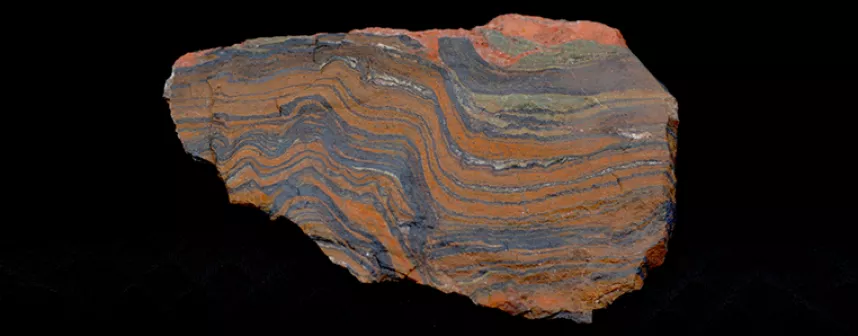Gallium and aluminium: new clues to the evolution of the Earth’s oceans
September 10, 2018
Gallium is a metal that is frequently used in modern high-technology products such as solar panels and LEDs, and hence, is a raw material that is of critical importance for the world economy. However, together with aluminum, this metal may also provide new insight into the evolution of the Earth’s earliest oceans and continents at the time when life first formed and evolved on our planet. In two new projects funded by the German Research Foundation (DFG) and the Federal Institute for Geosciences and Natural Resources (BGR), respectively, Michael Bau, Professor of Geosciences at Jacobs University, and his PhD students Katharina Schier and David Ernst investigate how the distribution of gallium and aluminum in the oceans has changed from the onset of the geological record some 3.8 billion years ago until today.
Bau and his team will use modern manganese nodules and iron- and manganese-rich chemical sedimentary rocks that were deposited at the seafloor of the ancient oceans and can serve as archives of the chemical composition of ambient seawater.
Bau paints a vivid picture of the childhood of our planet: “The young Earth’s surface environment was very different from the one we live in today. There was very little if any oxygen in the atmosphere, whereas the carbon dioxide content was much much higher. The oceans were rich in dissolved iron and manganese, and numerous large and small volcanoes expelled their lavas, ashes, and gases into the atmosphere and oceans. The Sun shone weaker than it does today, the Moon was closer to Earth (which produced tides that were much stronger), and the Earth was frequently hit by large and small meteorites”. And he adds: “But obviously, life managed to form and organisms evolved in this - by today’s standards - very hostile environment.”
Whereas the modern oceans receive most of their metal input from the continents via rivers, this was very different when Earth and its oceans were still young. Vigorous volcanic activity at the seafloor resulted in massive input of hot and acidic metal-rich waters, so-called hydrothermal fluids, into oxygen-free seawater, where the metals could accumulate. When sediments were deposited on the seafloor, they incorporated the hydrothermal metals together with those that had reached the ocean with rivers.
As hydrothermal fluids and river waters show very different ratios of gallium to aluminum, Bau, Ernst, and Schier will investigate iron- and manganese-rich sediments to see how this ratio changed during the past 3800 million years. This will allow them to quantify the changing importance of these two sources. Bau explains: “To date, there exist almost no high-quality data for gallium concentrations in such samples because of serious analytical challenges. Not only will our project fill this gap, but it will also provide valuable information on the general distribution and behavior of gallium in the environment.”
Schier, who will focus on samples from the modern oceans, such as manganese nodules, emphasizes another aspect: “Due to the ever-increasing use of critical metals such as gallium in modern high-technologies like LEDs and solar panels, more and more of these metals are released into the environment. A better understanding of their behavior in water, soil and organisms is a prerequisite to prevent environmental damage”. “And considering that gallium is a critical raw material, we will also improve our understanding of the processes that control the distribution of gallium, which will eventually help to find and evaluate gallium deposits”, Ernst is keen to add.
One of these new research projects is funded by the German Research Foundation within the framework of Priority Program 1833 “Building a Habitable Earth”, which brings together research groups from all over Germany to investigate how the Earth formed and then evolved from a hot ball of magma to one with landmasses, oceans, and life. In this Priority Program, the team from Jacobs University’s Earth and Environmental Science program is not only involved in the research, but will also host an international workshop in Bremen, and will co-organize a field workshop in Brazil.
For more information:
http://earth.user.jacobs-university.de
https://www.jacobs-university.de/news/die-ganze-erde-im-blick
Questions will be answered by:
Prof. Dr. Michael Bau | Professor of Geosciences
m.bau [at] jacobs-university.de | Tel.: +49 421 200-3564
